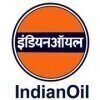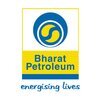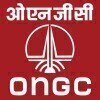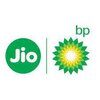
i
Reliance Industries
Proud winner of ABECA 2024 - AmbitionBox Employee Choice Awards
Filter interviews by
Reliance Industries Inspection Engineer Interview Questions and Answers
Reliance Industries Inspection Engineer Interview Experiences
2 interviews found
(2 Questions)
- Q1. How you identified material if fully rusted
- Ans.
By visual inspection, measuring thickness, conducting hardness tests, and using non-destructive testing methods.
Visual inspection for signs of rust and corrosion
Measuring thickness using tools like ultrasonic thickness gauges
Conducting hardness tests to check for degradation
Using non-destructive testing methods like radiography or ultrasonic testing
Referencing material specifications and standards for expected corrosio
- Q2. Colour codes for different materials
- Ans.
Colour codes are used to identify different materials in industries for easy identification and safety purposes.
Colour codes are typically used in industries like construction, manufacturing, and engineering.
For example, yellow is often used for flammable materials, red for fire protection equipment, and green for safety equipment.
The colour coding system may vary between industries and organizations.
It is important fo...
I applied via Company Website and was interviewed in May 2021. There was 1 interview round.
Interview Questionnaire
8 Questions
- Q1. Tell abt ur self
- Q2. Abt me aa per cv or personal detail
- Q3. wt is yr goal
- Q4. What we acheived our carier path abt special achivment
- Q5. Wt is mqin strenght
- Q6. As cv ur our technical knowleg and experiance basis
- Q7. What is core roll for this position
- Q8. As per mentoin cv responcibility
Interview Preparation Tips
Interview questions from similar companies

Mechanical Engineer Interview Questions & Answers
Indian Oil Corporationposted on 11 May 2018
I applied via Company Website and was interviewed before May 2017. There were 2 interview rounds.
Interview Preparation Tips
Experience: I have diploma °ree both in mechanical engineering
General Tips: My interview was held in bombay at head office of aarviencon.limited by H.R deportment darshan patel for 30 min at this time i maintain my pecence.
the question was realeted my subject mechanical engg and spoken english
Skills: communication skill, Communication, Leadership, Presentation Skills, Decision Making Skills
Duration: 1-4 weeks

Mechanical Engineer Interview Questions & Answers
Indian Oil Corporationposted on 23 Dec 2019
I applied via Walk-in and was interviewed in Nov 2019. There was 1 interview round.
Interview Questionnaire
2 Questions
- Q1. I'm autocad draftsman solidworks designer engineer
- Q2. Production quality manufacturing company
Interview Preparation Tips

I applied via Campus Placement and was interviewed in Jul 2024. There were 2 interview rounds.
(3 Questions)
- Q1. Tell me about yourself
- Ans.
I am a dedicated Mechanical Engineer with a passion for problem-solving and innovation.
Graduated with a degree in Mechanical Engineering from XYZ University
Experienced in designing and testing mechanical systems
Proficient in CAD software such as SolidWorks and AutoCAD
Strong analytical skills and attention to detail
Worked on projects like designing a new cooling system for a car engine
- Q2. Favorite subject
- Ans.
My favorite subject is Thermodynamics because I enjoy studying the transfer of energy and heat.
I find the laws of thermodynamics fascinating
I enjoy analyzing heat transfer processes
I like studying the relationship between energy and work
- Q3. Scavenging, spoliers, gas cycles, etc.
(2 Questions)
- Q1. Biggest achievement
- Ans.
Designed and implemented a new cooling system for a high-performance engine, increasing efficiency by 15%.
Led a team of engineers to analyze current cooling system performance
Designed a new cooling system using advanced simulation software
Implemented the new system on a prototype engine and conducted performance tests
Achieved a 15% increase in efficiency compared to the previous system
- Q2. Have you any time involved in decision making, can be during any task
- Ans.
Yes, I have been involved in decision making during various tasks.
I have made decisions regarding design changes in projects to improve efficiency.
I have been part of a team that had to decide on the best approach to solve a technical problem.
I have made decisions on prioritizing tasks to meet project deadlines.
I have been involved in selecting the most suitable materials for a project based on cost and performance req
Interview Preparation Tips

I appeared for an interview before Feb 2024.
(2 Questions)
- Q1. Tell me about Pumps
- Q2. Can you design a pump with its specifications parameters

(3 Questions)
- Q1. What is yield strength and ultimate strength
- Ans.
Yield strength is the stress at which a material begins to deform plastically, while ultimate strength is the maximum stress a material can withstand before breaking.
Yield strength is the point where a material starts to deform plastically, meaning it will not return to its original shape once the stress is removed.
Ultimate strength is the maximum stress a material can withstand before it breaks or fractures.
Yield stre...
- Q2. All FEA related questions
- Q3. All basic SOM and SHEET METAL RELATED QUESTIONS
Interview Preparation Tips

I applied via Campus Placement and was interviewed before Sep 2022. There were 3 interview rounds.

(1 Question)
- Q1. What would you do if the design called for tight tolerances and the part was manufactured out of tolerance
- Ans.
I would assess the impact of the out-of-tolerance part and determine if it can still function within acceptable limits or if it needs to be reworked or replaced.
Assess the functionality of the part with the out-of-tolerance dimensions
Determine if the part can still meet the overall design requirements despite being out of tolerance
Consider the potential impact on the performance and safety of the final product
Consult w...
(1 Question)
- Q1. Tell me what you see about his drawing
- Ans.
The drawing appears to be a mechanical component with multiple parts and dimensions.
The drawing includes various geometric shapes such as circles, rectangles, and lines.
There are labels indicating dimensions and measurements for each part.
The drawing may also include annotations or symbols representing different materials or processes.
It seems to be a detailed technical drawing for manufacturing or assembly purposes.
Skills evaluated in this interview

I applied via Company Website and was interviewed in Aug 2022. There were 3 interview rounds.

(1 Question)
- Q1. Basic Question related to mechanical basics
(2 Questions)
- Q1. Tell me about yourself
- Q2. Strength & Weakness, Where you see 5 years from now.
Interview Preparation Tips

Mechanical Engineer Interview Questions & Answers
Indian Oil Corporationposted on 12 Nov 2024
I applied via Company Website and was interviewed before Nov 2023. There were 2 interview rounds.
Impact of russia ukraine war
(2 Questions)
- Q1. Tell me about yourself
- Q2. Explain functioning of pump
- Ans.
A pump is a mechanical device used to move fluids from one place to another by creating pressure.
Pumps work by converting mechanical energy into fluid flow.
They typically consist of an inlet, an outlet, and a mechanism to move the fluid.
Examples include centrifugal pumps, diaphragm pumps, and piston pumps.
Reliance Industries Interview FAQs
Tell us how to improve this page.
Reliance Industries Interviews By Designations
- Reliance Industries Graduate Engineer Trainee (Get) Interview Questions
- Reliance Industries Assistant Manager Interview Questions
- Reliance Industries Field Executive Interview Questions
- Reliance Industries Manager Interview Questions
- Reliance Industries Senior Executive Interview Questions
- Reliance Industries Senior Manager Interview Questions
- Reliance Industries Deputy Manager Interview Questions
- Reliance Industries Mechanical Maintenance Engineer Interview Questions
- Show more
Interview Questions for Popular Designations
- Senior Inspection Engineer Interview Questions
- Third Party Inspection Engineer Interview Questions
- Quality Inspection Engineer Interview Questions
- Quality Inspection Trainee Interview Questions
- Quality Inspector Interview Questions
- Electrical Engineer Interview Questions
- QA QC Engineer Interview Questions
- Electrical Supervisor Interview Questions
- Show more
Reliance Industries Inspection Engineer Interview Process
based on 1 interview
Interview experience
Interview Questions from Similar Companies
Fast track your campus placements
Reliance Industries Inspection Engineer Reviews and Ratings
based on 9 reviews
Rating in categories
|
Manager
3.4k
salaries
| ₹5.4 L/yr - ₹19.4 L/yr |
|
Field Executive
2.7k
salaries
| ₹1.8 L/yr - ₹9.5 L/yr |
|
Assistant Manager
2.7k
salaries
| ₹1.8 L/yr - ₹10 L/yr |
|
Senior Manager
2.5k
salaries
| ₹8 L/yr - ₹28 L/yr |
|
Deputy Manager
1.2k
salaries
| ₹3.5 L/yr - ₹14 L/yr |

Indian Oil Corporation

Shell

Bharat Petroleum

Hindustan Petroleum
- Home >
- Interviews >
- Reliance Industries Interview Questions >
- Reliance Industries Inspection Engineer Interview Questions




















